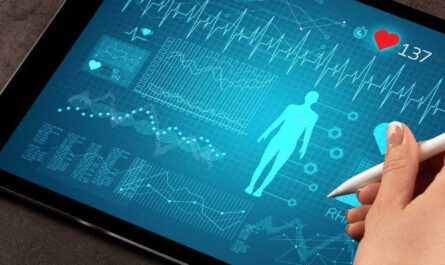Portable X-Ray Devices: Revolutionizing Medical Diagnosis and Treatment
Portable medical imaging devices have significantly disrupted the healthcare industry over the past decade. One of the most revolutionary technologies has been the development and advancement of portable x-ray devices. These compact and mobile devices allow doctors to take high-quality x-ray images anywhere, without needing large and expensive stationary equipment. In this article, we will examine how portable x-ray devices work, their benefits, and various applications in the medical field.
How Portable X-Ray Devices Work
Portable x-ray devices operate on the same principles as traditional stationary x-ray machines but in a compact and lightweight package that can be easily carried or transported. At the core is an x-ray tube that generates x-ray beams and a digital detector to capture the beams after they pass through the patient’s body. Modern portable x-ray devices use digital detectors like CCDs or CMOS instead of conventional x-ray film for capturing images. This allows the images to be displayed immediately on the device’s screen or transmitted remotely via WiFi or cellular networks.
The key components like the x-ray tube and detector are housed in protective casing alongside batteries to power the device without needing a wall socket. Advances in battery technology have enabled portable x-rays to achieve battery backup times of 2-3 hours on a single charge. Some portable devices are integrated with wheels or handles for easy transportation within hospitals or at accident/disaster sites. Overall, their compact sizes ranging from just a few pounds to 20 pounds allow doctors to bring x-ray diagnosis to the patient instead of vice versa.
Benefits of Portable X-Ray Devices
There are tremendous benefits that portable x-ray devices provide over traditional stationary machines:
Mobility and Flexibility: As mentioned earlier, portable x-rays can be easily wheeled to any location – hospital wards, emergency rooms, patient beds, ambulances, etc. This ensures fast diagnosis and treatment without delaying care.
Reduce Patient Transport: Critically ill patients no longer need to be transferred between radiology departments and wards. X-rays can be done at the bedside itself minimizing stress on patients.
Time Savings: Since portable devices eliminate the need for patient transport, it leads to quicker turnaround times for imaging studies and faster clinical decision making.
Cost Effectiveness: In the long run, portable x-rays help reduce unnecessary costs associated with additional staff needed for patient transfers as well as hospital beds occupied during the transfer process.
Telemedicine Capabilities: Integrated connectivity allows images from portable x-rays to be shared securely and reviewed by specialists remotely for timely diagnosis and consultations. This expands access to care especially in rural areas.
Applications of Portable X-Ray Devices
The portability and flexibility of these machines have enabled their use in many point-of-care settings beyond traditional hospital radiology departments. Here are some of their major applications:
Emergency Medicine: Portable x-ray is indispensable for prompt diagnosis and treatment of injured patients in emergency rooms and ambulances. It helps identify fractures, pneumothorax, foreign bodies, etc. without delaying stabilization.
ICUs and Critical Care: Critically ill patients requiring constant monitoring benefit immensely from bedside x-ray services. Pneumonia, line/tube placements, and progression of conditions can be tracked effectively.
Trauma and Battlefield Medicine: Military medical personnel rely on portable x-rays for immediate imaging of soldiers injured in the field or during combat missions to allow stabilization.
Long-Term Care Facilities: Nursing homes utilize portable machines to deliver x-ray services to elderly residents with limited mobility, reducing need for hospital transfers.
Dental Imaging: Compact dental x-ray devices allow dentists to perform x-rays and diagnose caries in their own offices or during home visits.
Veterinary Medicine: Veterinarians depend on portable units for imaging pets and farm animals directly in clinics or on site at farms without complicated patient handling.
Future Directions and Conclusion
Having revolutionized point-of-care radiology, continued developments can be expected in portable x-ray technologies. Manufacturers are striving to make the devices even smaller utilizing miniaturized components for greater accessibility. There is also a push for higher resolutions through more advanced digital detectors rivaling quality of stationary systems. Integrating other modalities like ultrasound and creating multimodality carts can add more diagnostic abilities in emergency settings. Developing portable CBCT for more detailed dental and bone scans is another area of active research.
Portable x-ray machines have emerged as a game-changing innovation in medical imaging over the past decade. By bringing fast, high-quality x-ray services directly to patients, they are transforming healthcare delivery models and settings. The mobility and convenience offered have maximized benefits while reducing unnecessary costs and delays in treatment. As technology progresses further, portable x-rays will continue decentralizing radiology to become an indispensable tool for doctors anywhere, anytime.
Note:
1. Source: Coherent Market Insights, Public sources, Desk research
2. We have leveraged AI tools to mine information and compile it



